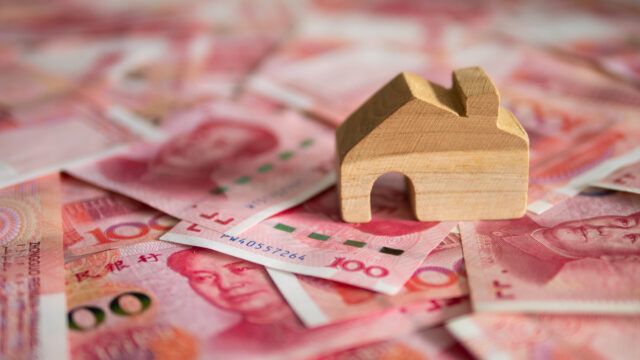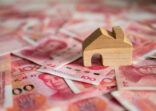China’s real estate landscape is undergoing profound structural shifts driven mainly by significant policy changes. During this time, President Xi Jinping has repeatedly reinforced his key policy message that “houses are for living in, not for speculation”, forcing property developers to adopt a more utilitarian model. The structural changes taking place are resulting in increasing market share for state-owned developers at the expense of private sector companies. We expect the latter to play a smaller role in China’s residential property sector in the years ahead. As these trends play out, over time we expect to see healthier balance sheets emerge for those developers able to survive the current downturn, with more stable operations coupled with more modest profit margins.
The days of rapid, break-neck growth for the Chinese property sector are behind us. Although urbanisation may continue to be a driver, as will upgrading, the consensus is that the overall pace of growth will slow. In relative terms, the property sector is expected to become less important to the Chinese economy over time. Moderation on the price appreciation front is also likely, confirming Beijing’s determination to eradicate property speculation and provide more affordable housing to a broader section of China’s population. Affordability is increasingly a concern for the government – incomes for many households have declined in the wake of the pandemic and slowing economic growth has led to a rise in urban unemployment. It is estimated that only around 20% of fresh university graduates this year have been able to get jobs.
While these objectives may provide a ceiling to prices, the authorities clearly wish to avoid significant falls in home values since property accounts for a large proportion of household wealth. According to a Reuters survey of analysts and economists in September, home prices are expected to fall 1.4% this year. Sharp drops could have a significant negative wealth effect on consumer demand that could potentially threaten social stability. Managing property deleveraging without triggering a sharp fall in home prices and a macro-economic downturn is a very difficult balancing act. However, the Chinese government realises there is no other choice, as putting off these painful yet necessary structural reforms can only make matters worse in the long run.
Short-term headwinds
Short-term headwinds continue to impede the recovery of the residential property sector in 2022, led by a sharp fall in home sales and construction activity, tight liquidity conditions, mortgage repayment boycotts and the threat from renewed outbreaks of Covid-19. Reports about mortgage repayment suspensions by homebuyers emerged in July as a protest against the non-delivery of purchased apartments by cash-strapped developers. According to one study by Citi, in 24 cities, properties with delayed delivery as of end 2021 accounted for 9% of 2021 new home sales in these cities. If the mortgage strike continues, the same study estimated that in a worst-case scenario it could create Rmb561bn (US$78.3bn) of new non-performing loans, or 1.4% of the total outstanding mortgage balance, creating a drag on GDP of around 0.3%.
Since there are significant costs borne by homebuyers who default on their mortgages, we believe their purpose is to pressure central and local governments and property developers to ensure the unfinished units are delivered. While the recent mortgage boycott is indicative of the severity of the downturn, we believe that the impact on the financial system is manageable. We think restoring households’ confidence in housing is the key to averting further escalation. But this will take time and a prerequisite to this is the completion of stalled projects for which homeowners have already paid.
Size matters
For China’s listed property developers, liquidity and continued access to capital markets have become crucial since contracted sales, the biggest source of operational cash flows, have continued to shrink rapidly. Residential property gross floor area sold in the first half of 2022 slumped 26.6% year on year. The outlook for the second half of 2022 is less pessimistic as the base effect will wear off, while there are some early signs that the market is beginning to stabilise. Recovery in 2023, however, is expected to be weak and a sharp rebound in China’s residential property sector appears unlikely. Dropping the 5.5% economic growth target for 2022 is also a signal from policymakers that they aim to stabilise rather than reflate the housing market.
State-owned property companies with deeper pockets and better funding access are starting to dominate the sector, with only the better managed companies in the private sector expected to survive. It is estimated that just the top quarter of the privately owned developers will pull through, with the rest falling by the wayside as funding conditions become increasingly restrictive triggering a broad sector consolidation. The divergence in performance of strong versus weak developers is expected to continue to widen.
Much of the pain en route to the long-term objectives of affordable housing and deleveraged balance sheets has been borne by the offshore bond market. As the pressure has started to broaden out, economic challenges have grown and spread to other areas, triggering a more decisive policy response from the government. For example, mortgage approvals have accelerated since late last year, local level restrictions have been eased and recent reports say Beijing will launch a real estate fund potentially totalling Rmb300bn to help property developers complete unfinished units and to restore confidence among homebuyers.
Reports that Chinese regulators plan to allow select developers to issue renminbi-denominated bonds guaranteed and underwritten by state-owned firms was welcomed by the markets. Names mentioned include Longfor, Gemdale, Country Garden, CIFI, Seazen, and Sino Ocean. This is a stronger policy support than in the previous round where high-quality, privately-owned developers issued Rmb500m-Rmb1bn of bonds with partial credit protection. However, we still need to monitor the actual issuance size. This is positive for the short-term financial liquidity of the selected developers, but a recovery of the physical market is more important for the sector.
China’s regulators are mindful of adding to potential systemic risks by bailing out the weaker developers. At the same time, Chinese banks naturally remain wary of incurring higher non-performing loans by raising their exposure particularly to weaker players in the sector. Furthermore, local governments know they will be held accountable by Beijing for the completion of unfinished units locally, so they remain reluctant to loosen escrow account regulations that restrict the access of property developers to presale revenues. It therefore seems likely that only state-owned property developers and privately-owned enterprises with strong balance sheets can survive as they continue to receive more favorable treatment from the regulators, lenders and investors.
Challenging environment favors bottom-up investment style
In the near term, we expect the Chinese property sector to remain volatile. Further out, we anticipate consolidation in the sector followed by a return to more stable conditions. The investment implications are that credit selection will be of particular significance in this bifurcated sector and deep fundamental research will be key to identifying the long-term survivors. The challenging environment suggests investors in China credit should favour a highly selective bottom-up investment style. A strong credit research team will be crucial for selecting property developers with adequate liquidity buffers, greater exposure to top tier cities that are still expanding and low short-term refinancing needs.
The decline in issuance from the China property sector accompanied by the sharp fall in prices has reduced its importance to the Asia US dollar credit asset class. Given the uncertain short-term outlook in China, there has also been a sharp reduction in the overall debt issuance from Chinese issuers at a time when the regional primary market has reported robust volume growth. We continue to see growth in the Asian credit markets, driven by more opportunities emerging in a regionally diversified way.
Asian credit sees diversified opportunities emerging
We still consider Asian credit to be the higher quality segment of the emerging markets fixed income universe. The sector is comprised of diversified and high-quality markets with an average rating of BBB+, while 30% of the issuers belong to the developed market category. Asia has higher domestic savings and better current account surpluses relative to the rest of the emerging markets. Even if China’s short-term credit outlook remains clouded, we believe there are attractive investment opportunities within the region as the fallout from the Chinese property sector remains largely contained.
Sheldon Chan and Leonard Kwan are portfolio managers at T Rowe Price.

















